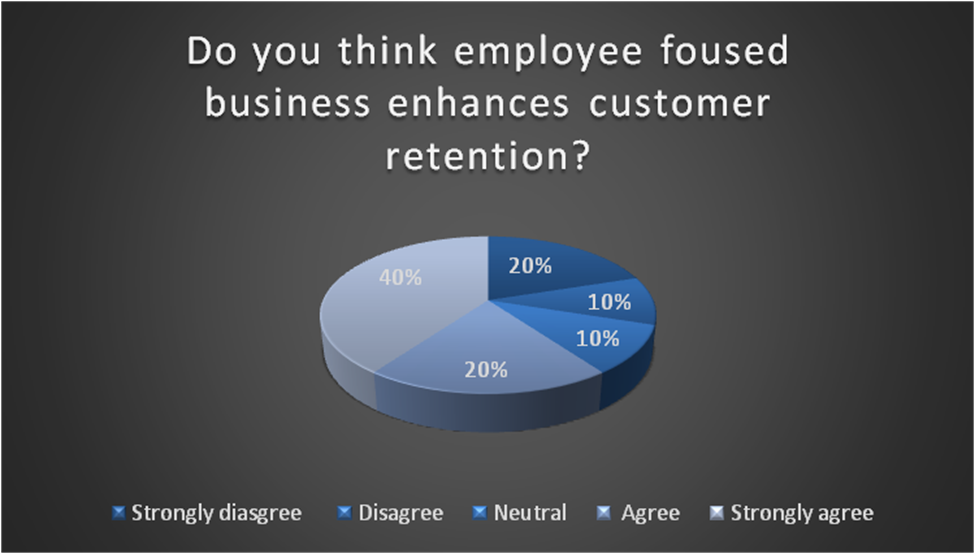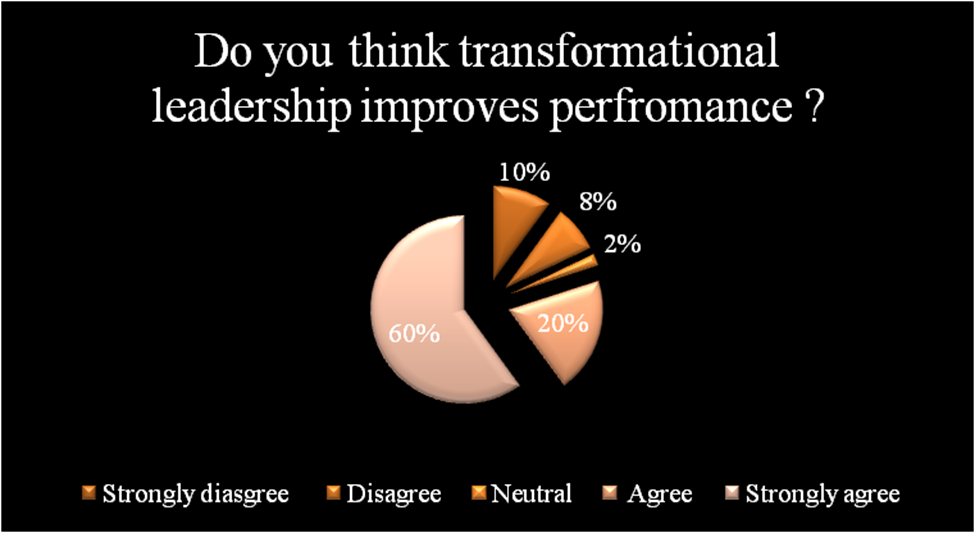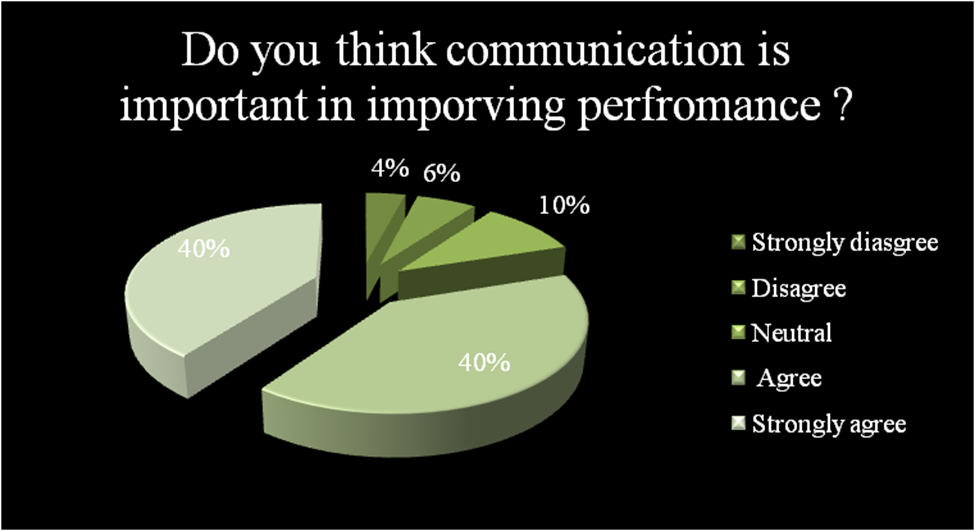EB4902 ORGANISATIONAL COMMUNICATION ASSIGNMENT SAMPLE
Introduction
The main aim of the study is to analyze the differences between the profit-centric business model and the employee-focused business model. In doing so, the study will analyze the difference based on leadership style, organizational culture and internal communication. On the other hand, a profit-centric business model mainly focuses on the outcome of the business whereas the employee-focused business demonstrates a stable relationship with the employees. The situation allows them to identify drawbacks and strong points of employees.
The thesis statement of the study is that a profit-centric business model can affect the performance of employees whereas a customer-focused business model enhances the performance of employees.
Differences based on the business priorities and values
In the case of a profit-centric business model, the main priority of business is to make the business profitable and viable. In order to analyze this, it can be seen that this type of business model mainly focuses on earning profit and the decision is mainly taken based on the profit. As mentioned by Sjödin et al. (2020), this situation can create a negative impact on employees. In this business model, the company’s value is to make a profit which enhances the performance of the company in the short run. However in the long run it creates a negative impact on the overall performance of employees. Besides that, this situation can reduce the retention rate of employees.
On the other hand, in the case of an employee-focused business model, the main priorities of the business are the well-being of employees. As argued by Jalil and Hwang (2019), this situation enhances employee satisfaction which creates a positive impact on the overall performance of the company. The main value of these types of companies is to provide a high level of service to the customers.
Differences based on the leadership and management style
The leadership and management style of the company plays an important role in improving the performance of the company. In addition to that, it depicts an important part in improving the satisfaction of employees. According to van Tonder et al. (2020), in other words, the profit-centric business model mainly focuses on autocratic leadership. In their leadership style, the communication with the employees reduces which can have an impact on the performance as mentioned by DaSilva (2018), this situation can create a problem in providing a clear idea about the goals and objectives. This situation can have a negative impact on the overall performance of the employees. Besides that, this situation can also have a negative impact on the training and development of employees. The leaders are unable to get an idea about the skills of employees which can also have a negative impact on the overall performance of the company.
However, in the customer-centric approach, the business model focuses on the transformational or transactional leadership style. These two leadership styles create a positive impact on the communication among employees. As mentioned by Turoń (2022), this situation enables the employees to get a clear vision of the goals and objectives of the company which enhances the performance of the company. Besides that it allows them to get a clear idea about the roles and responsibilities of employees which allows them in improving the performance of the company. On the other hand, in the case of transactional leadership, the leaders also provide them rewards which in turn create a positive impact on the overall performance of employees. According to Nezami and Palmatier (2018), this also motivates them and improves their performance. On the other hand, it allows them to enhance the performance of the employees. Besides that, in the case of transformational leadership style leaders focus on short term goals which enable them in achieving the goals easily. This in turn enhances the company’s performance.
Differences based on organizational culture
The organizational culture depends on the leadership styles of management. In case leaders of the organization maintain a transformational leadership style then it will improve the culture of the organization. On the other hand, in the case of an autocratic leadership style, can have a negative impact on the customer of the organization (Schuh et al. 2020). Besides that, the culture of the organization depicts an important part in improving the performance of employees. On the other hand, the culture of the organization also enhances relationships between departments which enhances the overall performance of the organization. On the other hand, in the case profit-centric business model communication among employees decreases which can have a negative impact on the overall performance of a company (Breuer et al. 2018). Besides that, this situation can have a negative impact on the overall performance of employees. For example in SpaceX Elon Musk allows an autocratic leadership style which has affected the organizational culture of the organization. This has affected the performance of the company (Malik et al. 2018). The lack of communication has created a negative impact on the overall performance of the company.
The case of an employee-focused organization mainly focuses on the relationship between employees. As referenced by Pires Klein et al. (2019), the relationship among employees can be improved through communication. Thus it automatically improves the culture of the organization which in turn enhances the performance of employees. In addition to that, it allows them to meet the objectives of the organization. However, in the case of Jeff Bezos, he follows transformational leadership, which has allowed them in improving the employee’s satisfaction has allowed them in being one of the best customer service providers in the world.
Differences based on the communication
The employee’s performance severely depends on communication. Communication plays an important role in improving the relationship among the employees. Besides that communication among the employees allows them in improving the relationship among the departments. This in turn allows them to moor the overall performance organization. As mentioned by Sheth et al (2020), in the case of a profit-centric business model it reduces the values of communication which may benefit them in the short run, however it reduces the productivity of employees in the long run. However, communication among employees allows them to improve the performance of the company which in turn improves the performance of the organization. The t improvement in communication Amazon has improved the performance of employees, which allows them in improving the performance of the company.
Impact on the corporate
Notwithstanding that it portrays a significant part in working on the fulfilment of representatives. All in all the benefit-driven plan of action chiefly centres on the absolutist initiative. In their administration style, the correspondence with the workers diminishes which can affect the presentation as referenced by Chammassian and Sabatier (2020), the present circumstance can make an issue in giving a reasonable thought regarding the objectives and goals. The present circumstance can adversely affect the general exhibition of the representatives. Other than that, the present circumstance can likewise adversely affect the preparation and improvement of representatives. The pioneers can’t find out about the abilities of workers which can likewise adversely affect the general exhibition of the organization.
Anyway in the client-driven approach the plan of action centres around the groundbreaking or value-based administration style. These two initiative styles make a positive effect on the correspondence among representatives. As mentioned by Bocquet et al. (2020), the present circumstance empowers the workers to get an unmistakable vision of the objectives and goals of the organization which upgrades the presentation of the organization. Other than that it permits them to find out about the jobs and responsibilities of workers which allows them in working on the presentation of the organization. Then again, on account of conditional authority, the pioneers additionally give them rewards which thus make a positive effect on the general execution of representatives. This likewise rouses them and works on their exhibition. Then again, Thailand will permit them to upgrade the exhibition of the representatives. Other than that, if there should be an occurrence of groundbreaking authority style pioneers centre on momentary objectives which empowers them in accomplishing the objectives without any problem. This thus upgrades the organization’s presentation.
The authoritative culture relies upon the initiative styles of the board. On the off chance that heads of the association keep a groundbreaking administration style then it will work on the way of life of the association. As mentioned by Dhanda and Shrotryia (2020), on account of a totalitarian authority style can adversely affect the customer of the association. Other than that the way of life of an organization portrays a significant part in working on the presentation of representatives. Then again, cultural hierarchy additionally improves the connection between offices which upgrades the general exhibition of association. Then again, in the event that benefits-driven plan of action correspondence among workers diminishes which can adversely affect the general exhibition of an organization? Other than that, the present circumstance can adversely affect the general presentation of workers.
On account of a worker zeroed in association it principally centres on the connection between representatives. The relationship among workers can be worked on through correspondence. Hence it naturally works on the way of life of the association which thus upgrades the exhibition of representatives. Notwithstanding that it permits them to meet the goals of the association.
The worker’s presentation seriously relies upon correspondence. Correspondence paralysis is a significant job in working on the relationship among the representatives. Other than that correspondence among the workers permits them to work on the relationship among the divisions. Thus it permits them to secure the general execution association. On account, a benefit-driven plan of action diminishes the upsides of correspondence which might help them in the short run, but it decreases the usefulness of representatives over the long haul. Anyway correspondence among representatives permits them to further develop the execution of the organization which thusly works on the exhibition of the association.
Primary research
The primary research has been done on 50 employees from the 40% of employees think that communication plays an important role in improving the performance of the organization. On the other hand, there are nearly 4 and 6% of employees disagree that communication enhances the performance of employees.
Transformational leadership depicts an important part in improving the performance of the organization. In order to analyze the survey results, it can be seen that an improvement in leadership style creates a positive impact on employee performance. In addition to that, it can be seen that 60% of people think that transformational leadership enhances the performance of employees which depicts that in order to improve the performance of an organization they will have to focus on internal communication.
The employee-focused business model allows leaders to maintain the satisfaction of employees. As a matter of fact, the employees will provide high-quality service to the customers which will enhance the customer retention rate. In addition to that, it can be seen that near about 40% of people think that an employee-focused business enhances the customer retention rate. This situation also plays an important role in improving the performance of an organization. Besides that it allows them to improve the performance of the company.
Conclusion
Based on the above study it can be concluded that a profit-centric business improves performance in the short-run however, in the long run, it has a negative impact on the business. In order to do so, the study has presented the difference between profits centric business and an employee-focused business. It has shown that a lack of communication creates a negative impact on the overall performance of the business. This in turn allows them to improve the performance of Eth Corporation. On the other hand, it has shown the leadership style of the rift centric business and employee focused business changes which have a negative impact on the performance of the corporation. Thus it can be stated that the thesis statement of the study is proved profit-centric business enhances profit in the short-run however it can create a negative impact in the long run.
Reference list
Sjödin, D., Parida, V., Jovanovic, M. and Visnjic, I., 2020. Value creation and value capture alignment in business model innovation: A process view on outcome‐based business models. Journal of Product Innovation Management, 37(2), pp.158-183.
Jalil, N.A. and Hwang, H.J., 2019. Technological-centric business intelligence: Critical success factors. Int. J. Innov. Creat. Chang.
van Tonder, C., Schachtebeck, C., Nieuwenhuizen, C. and Bossink, B., 2020. A framework for digital transformation and business model innovation. Management: Journal of Contemporary Management Issues, 25(2), pp.111-132.
DaSilva, C.M., 2018. Understanding business model innovation from a practitioner perspective. Journal of business models, 6(2), pp.19-24.
Turoń, K., 2022. From the Classic Business Model to Open Innovation and Data Sharing—The Concept of an Open Car-Sharing Business Model. Journal of Open Innovation: Technology, Market, and Complexity, 8(1), p.36.
Nezami, M., Worm, S. and Palmatier, R.W., 2018. Disentangling the effect of services on B2B firm value: Trade-offs of sales, profits, and earnings volatility. International Journal of Research in Marketing, 35(2), pp.205-223.
Schuh, G., Wenger, L., Stich, V., Hicking, J. and Gailus, J., 2020. Outcome economy: Subscription business models in machinery and plant engineering. Procedia CIRP, 93, pp.599-604.
Breuer, H., Fichter, K., Lüdeke-Freund, F. and Tiemann, I., 2018. Sustainability-oriented business model development: Principles, criteria and tools. International Journal of Entrepreneurial Venturing, 10(2), pp.256-286.
Malik, A., Pereira, V. and Budhwar, P., 2018. Value creation and capture through human resource management practices: Gazing through the business model lens. Organizational Dynamics, 47(3), pp.180-188.
Pires Klein, L., Krivoglazova, A., Matos, L., Landeck, J. and de Azevedo, M., 2019. A novel peer-to-peer energy sharing business model for the Portuguese energy market. Energies, 13(1), p.125.
Fehrer, J.A. and Wieland, H., 2021. A systemic logic for circular business models. Journal of Business Research, 125, pp.609-620.
Sheth, J., Jain, V. and Ambika, A., 2020. Repositioning the customer support services: the next frontier of competitive advantage. European Journal of Marketing.
Chammassian, R.G. and Sabatier, V., 2020. The role of costs in business model design for early-stage technology startups. Technological Forecasting and Social Change, 157, p.120090.
Bocquet, R., Cotterlaz-Rannard, G. and Ferrary, M., 2020. How do NPOs get funding? A business model perspective based on the conversion of symbolic capital. Nonprofit and Voluntary Sector Quarterly, 49(6), pp.1233-1258.
Dhanda, U. and Shrotryia, V.K., 2020. Corporate sustainability: the new organizational reality. Qualitative Research In Organizations and Management: An International Journal.
Giourka, P., Sanders, M.W., Angelakoglou, K., Pramangioulis, D., Nikolopoulos, N., Rakopoulos, D., Tryferidis, A. and Tzovaras, D., 2019. The smart city business model canvas—A smart city business modeling framework and practical tool. Energies, 12(24), p.4798.
Stripling, E., vanden Broucke, S., Antonio, K., Baesens, B. and Snoeck, M., 2018. Profit maximizing logistic model for customer churn prediction using genetic algorithms. Swarm and Evolutionary Computation, 40, pp.116-130.
Sebastian, A., Sivagurunathan, S. and Muthu Ganeshan, V., 2018. IoT challenges in data and citizen-centric smart city governance. In Smart Cities (pp. 127-151). Springer, Cham.
Adrodegari, F. and Saccani, N., 2020. A maturity model for the servitization of product-centric companies. Journal of Manufacturing Technology Management.
Paiola, M. and Gebauer, H., 2020. Internet of things technologies, digital servitization and business model innovation in BtoB manufacturing firms. Industrial Marketing Management, 89, pp.245-264.
Appendix



Assignment Services Unique Submission Offers:

